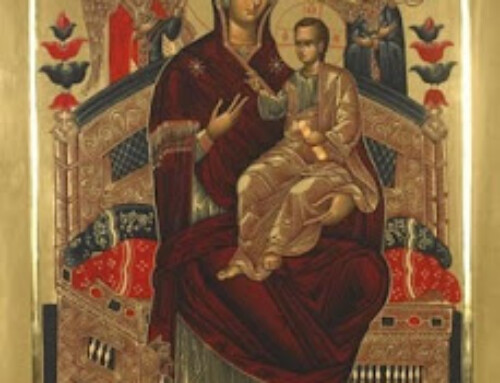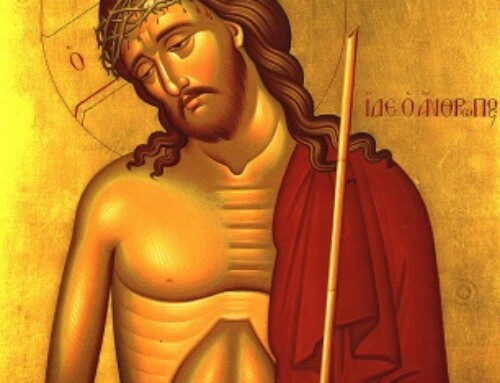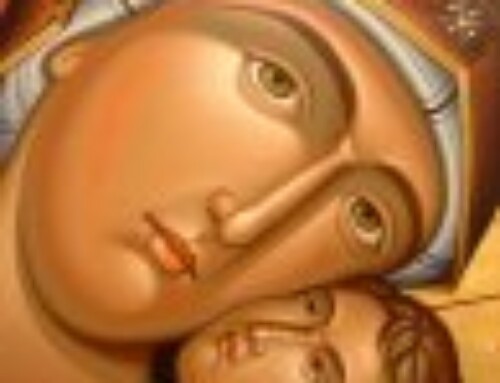Word Magazine November 1965 Page 24-25
THANKSGIVING
By Adma Shakhashiri
Commission on THE WORD, Deportment of Religious Education
To Children
A long time ago in the year 1620, the pilgrims crossed the Atlantic Ocean from England and settled in Plymouth, Massachusetts. Before reaching the shores of the New World, however, they lived in Holland for twelve years. They endured many hardships during their voyage to America on the Mayflower. The ocean was rough during the winter season and the weather was cold. By the landing of these brave families on the rough coast of the New World, the new little colony of Plymouth was established. They had to face many disappointments and difficulties. They did not have enough to eat. Very often they were hungry, cold and sick. In their strange new country they toiled and worked hard for almost a year.
The pilgrims always prayed to God and depended on Him in their daily life. In less than a year from the time of their arrival, their gratitude led them to hold a special time for Thanksgiving. Governor Bradford was thankful to God for all the blessings that had come to his group, and suggested that a special day be set apart for showing thanks. All members of the Colony planned to have a big feast with turkey and food from the harvest. Elder Brewster also wished that the pilgrims should share their harvest goods with their Indian friends. Thus, they gave a chance to the Indian Chief and ninety of his fellow tribesmen to enjoy the harvest feast for three days. The strangers observed quietly while the pilgrims offered their prayers of thanks to God before they ate their meals.
The pilgrims were influenced by the tradition of observing harvest-time in their own native land of England, and also in Holland. The celebration of the harvest was a custom that had been observed in many ways by different people for many hundreds of years. The oldest harvest festival is the Feast of the Tabernacle every Autumn. This goes way back to the history of the Jews when they left Egypt and wandered for forty years before they reached the Promised Land. Until the present time they live in small huts —“succas” — for a period of seven days. They pray, fast, and give joyful thanks to God for their blessings.
Ingathering “harvest” feasts are also held in Greece, Italy, Canada, China, Poland, Czechoslovakia and Norway. In the olden days. Russian peasants looked forward to their harvest festivals. Young folks carried wreaths that were prepared from wheat, rye, oats and barley woven together. They walked slowly in a big parade to replace with new ones the old wreaths hung on the side of each house, in order to bring good luck to the household. A feast of all kinds of food was served to all. It was followed by popular folk dancing, that shows the story of the harvest in dancing.
The pilgrims of Plymouth colony never dreamed that their first Thanksgiving Day would ever become a national holiday in America. It was not until Sara Josepha Hale spent endless efforts for its recognition that it became an annual holiday. From those days she was called the Mother of Thanksgiving Day. It is a family day of great importance, and besides Christmas and Easter, is the only national day in America with a religious meaning.
Although this feast is not on the Orthodox Church Calendar, yet it means a great deal to us as Orthodox citizens of this country. Every day we pray to God and thank Him for all His blessings — in our morning and evening prayers and at meal times. On Sunday during the Liturgy we also show our gratitude as we join the priest in offering thanks unto the Lord. This is how the spirit of this Thanksgiving Day is in line with the Orthodox Church teachings and worship.
Michael Neam of St. George Orthodox Church of Washington, D.C., who is 8 years old wrote the following prayer for Thanksgiving:
“Thank you God for home and trees. Thank you God for the sun and breeze, And for our food and for our fun, Here is a thank you from everyone.”
B — To Teenagers
The Saint from Alexandria
The city of Alexandria is the most beautiful seaport of Egypt on the Mediterranean Sea. Many big ships from different countries lay anchor there on their way to the Middle East. Children from many lands accompany their parents; and in spite of the different languages they speak, they all have one purpose to tour and enjoy seeing this very interesting city. Even though Alexandria has changed from the olden days, visitors walking down its streets remember important incidents and events that took place there a very long time ago. Some children recall from their history lessons that the city was named after the mighty Emperor, Alexander the Great.
Alexander was that most powerful Greek emperor conquered many peoples and ruled many lands. He lived some three hundred years before the birth of Jesus Christ. After his triumphant conquest of Jerusalem, he led his victorious army to conquer Egypt, and established the city of Alexandria as his capital on the Mediterranean. Later in history, Alexandria became very famous as an important center of learning.
Many other visitors to this historical city associate it also with the history of the Church. They connect it with the name of a well known and famous heroine of the Church the virgin Martyr Saint of great love to Jesus Christ, Saint Catherine. Women and young girls who are named after her are proud to hear her name and love to visit the city where their Patron Saint was born.
Some three hundred years after the birth of Jesus Christ our Saviour, a pretty girl was born in Alexandria. Her pagan parents were noble and rich. They named their daughter Catherine, and offered her all their love and wealth. From her early childhood she was very intelligent. Catherine grew to be a young lady of great beauty with much love of virtue and an eagerness to learn. Her wealthy parents gave her a fine education.
Great Orthodox Christian leaders were teaching in those famous schools in Alexandria about the One True God and His Son Jesus Christ. Those wonderful Christian teachers preached the Christian religion to all the people As a result, many pagans believed in Christ. Catherine was very much interested in what her teachers taught. She also became Christian and expressed her love and faithfulness to Christ in many ways. She read about the life of the dedicated Christian virgin Saints, and considered their lives an example for her to follow. The more she read the Gospel and learned about the Saviour, the more she was fascinated with His teachings. She devoted her whole life to Him.
Early in her youth, Catherine saw in a4~ dreans that the Virgin Mary, the Mother of God, was holding the Child Jesus in her arms. Jesus saw that Catherine was not pretty in spite of her physical beauty because she was not baptized. Right after this vision, it was clear to her that she should be baptized and join the Church. Her baptism gave her a great deal of strength, and she vowed to remain virgin to serve Christ. She was sent to exile because she refused to marry the pagan tyrant Maximus Daza. This cruel ruler ordered his men to torture and destroy all the Christians who loved Christ and these Christians who had the courage not to deny Him.
Catherine had learned by this time a great deal about the Christian religion. and was well educated in many sciences. She was a courageous and eloquent speaker, and won fame by holding public discussions with the pagans. In the presence of Maximus the tyrant, she went to their temples and defeated theni with her steadfastness in faith and courage ~,f speech. She proved to thetn that there is only One True God and His Son Jesus Christ. She very boldly pointed out to them their false, pagan religion.
Maximus the tyrant was very angry with her, and ordered his soldiers to torture her. They tied her to a large revolving wheel that was studded with spikes. Catherine bore all this pain with prayers and patience. She was not afraid, but rather remained faithful in her love and dedication to Christ. Amid her prayers to Christ to overcome the ignorance of the pagans, she was brutally beheaded in 310 A.D. At that painful sight many were converted to this true Christian religion after they saw how much she loved Christ. Her body was buried in Mount Sinai by some faithful men of God. A convent was built in her mentory on Mount Sinai. It stands until this present day in honor of this faithful Saint. The Church celebrates her Feast on November 25.
St. Catherine is also considered the Patron Saint of Soldiers. The Crusaders who came from Europe about one thousand years age, to fight and regain the Holy Land admired and loved St. Catherine. She became their Patron Saint. Her name was for ever on their lips, and they prayed for her help whenever they were in danger. Many churches were built by them in the Middle East in her name and honor. Saint Catherine’s Church in Anfi, a town near Tripoli. Lebanon, was built by the Crusaders over nine hundred years ago. This Church is still in use by the Orthodox worshippers in the Archdiocese cf His Eminence Metropolitan llyas Kurban,




